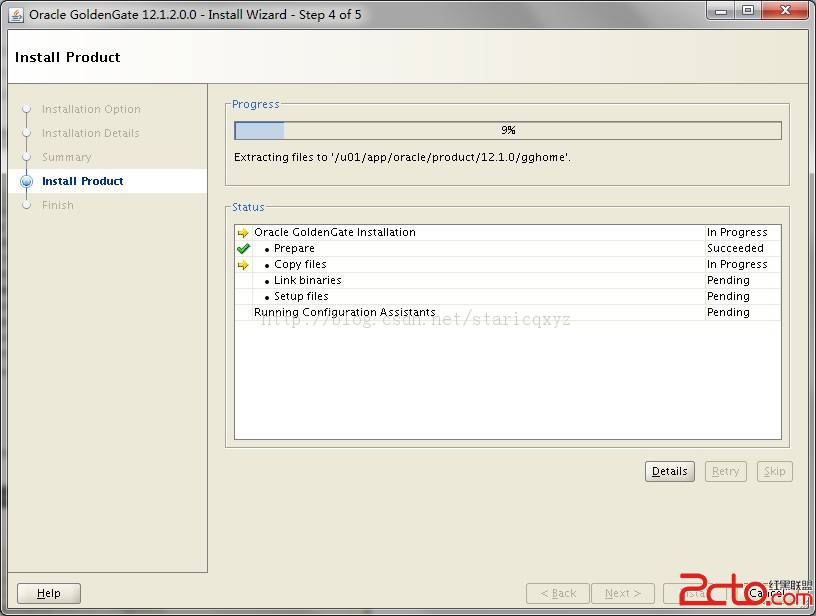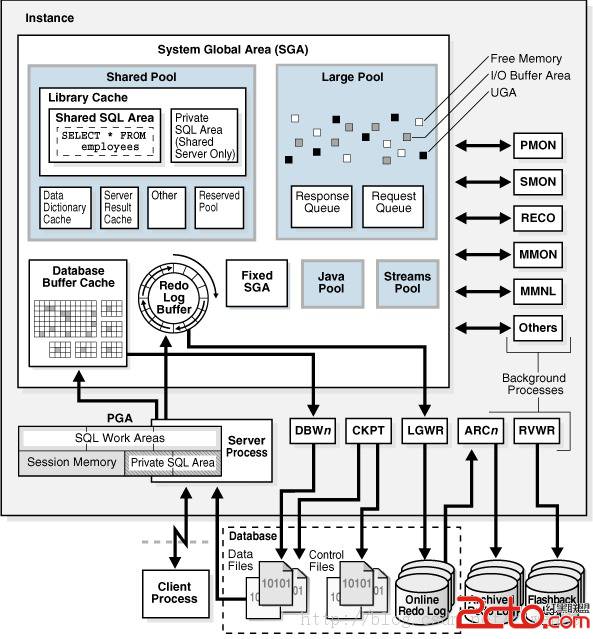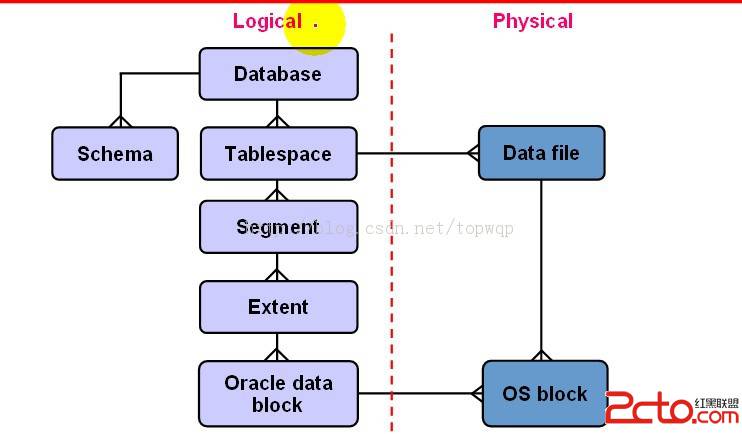ORACLE相关语法--子程序和程序包(package,function,procedure)
ORACLE相关语法--子程序和程序包(package,function,procedure)
总结:
子程序是命名的PL/SQL块,可带参数并可在需要时随时调用。
PL/SQL有两种类型的子程序,即过程和函数。
过程用于执行特定的任务,函数用于执行任务并返回值。
程序包是对相关类型、变量、常量、游标、异常、过程和函数的封装。
程序包由包规范和包主体两部分组成。
包规范是包的接口,包含公用对象及其类型。
包主体实现包规范中的游标和子程序,包主体中的声明仅限于在包内使用。
程序包中游标的定义分为游标规范和游标主体两部分。
语法及示例:
1、存储过程
创建存储过程的语法:
CREATE [OR REPLACE] PROCEDURE procedure_name
[(parameter_list)]
{IS|AS}
[local_declarations]
BEGIN
executable_statements
[EXCEPTION
exception_handlers]
END [procedure_name];
其中:procedure_name是过程的名称。
parameter_list是参数列表。
local_declarations是局部声明。
executable_statements是可执行语句。
exception_handlers是异常处理程序。
示例1:演示创建过程(参数列表中为IN参数赋予一个默认值,不能为OUT、IN OUT参数赋予默认值)
create or replace procedure find_emp(emp_no in number:=7900)
as
empname varchar2(20);
begin
select ename into empname from emp where empno=emp_no;
dbms_output.put_line('雇员姓名是 '||empname);
exception
when no_data_found then
dbms_output.put_line('雇员编号未找到');
end find_emp;
调用过程:EXECUTE procudure_name(parameters_list);
也可以在过程里面调用,直接写上procudure_name而不必写EXECUTE。
示例2:演示创建带OUT参数的过程
create or replace procedure test(value1 varchar2,value2 out number) is identity number; begin select sal into identity from emp where empno=value1; if identity<2000 then value2:=1000; else value2:=500; end if; end;
调用带OUT参数的过程:
declare
value2 number;
begin
test('7900',value2);
dbms_output.put_line(value2);
end;
示例3:演示创建带IN OUT参数的过程
create or replace procedure swap(p1 in out number,p2 in out number) is v_temp number; begin v_temp:=p1; p1:=p2; p2:=v_temp; end;
调用带IN OUT参数的过程:
declare
num1 number:=100;
num2 number:=200;
begin
swap(num1,num2);
dbms_output.put_line('num1= '||num1);
dbms_output.put_line('num2= '||num2);
end;
示例4:将过程的执行权限授予其他用户
GRANT EXECUTE ON find_emp TO scott; GRANT EXECUTE ON swap TO PUBLIC;
将find_emp过程的执行权限授予给用户scott,将执行swap过程的权限授予所有数据库用户。
删除过程语法:
DROP PROCEDURE procudure_name;
2、函数
定义函数的语法如下:
CREATE [OR REPLACE] FUNCTION function_name
[(parameter_list)]
RETURN datatype
{IS|AS}
[local_declarations]
BEGIN
executable_statements
[EXCEPTION
exception_handlers]
END [function_name];
其中:function_name是函数的名称。
parameter_list是参数列表。
local_declarations是局部声明。
executable_statements是可执行语句。
exception_handlers是异常处理程序。
使用函数时注意:形式参数必须只使用数据库类型,不得使用PL/SQL类型。函数的返回类型也必须是数据库类型。
函数不能单独执行,只能通过SQL语句或PL/SQL程序块来调用。
示例5:演示如何创建函数
create or replace function fun_hello return varchar2 is begin return '朋友,您好'; end;
调用函数:select fun_hello from dual;
函数的授权:同过和的授权一样具体请看示例4。
删除函数:DROP FUNCTION function_name
过程和函数的差异
过程 函数
作为PL/SQL语句执行 作为表达式的一部分调用
在规范中不包含RETURN子句 必须在规范中包含RETURN子句
不返回任何值 必须返回单个值
可以包含RETURN语句,但是与函数不同,它不能用于返回值 必须包含至少一条RETURN语句
3、程序包
创建包规范的语法:
CREATE [OR REPLACE] PACKAGE package_name IS|AS [Public type and item declarations] [Subprogram specifications] END [package_name];
其中:package_name是包的名称。
Public type and item declarations是声明类型、常量、变量、异常和游标等。
Subprogram specifications声明PL/SQL子程序。
示例6:演示创建程序包规范
create or replace package pack_op is procedure pro_print_ename(id number); procedure pro_print_sal(id number); function fun_re_date(id number) return date; end;
创建包主体的语法:
CREATE [OR REPLACE] PACKAGE BODY package_name IS|AS [Public type and item declarations] [Subprogram bodies] [BEGIN Initialization_statements] END [package_name];
其中:package_name是包的名称。
Public type and item declarations是声明类型、常量、变量、异常和游标等。
Subprogram bodies是定义公共和私有PL/SQL子程序。
示例7:演示创建程序包主体
create or replace package body pack_op is
procedure pro_print_ename(id number) is
name emp.ename%type;
begin
select ename into name from emp where empno=id;
dbms_output.put_line('职员姓名:'||name);
end pro_print_ename;
procedure pro_print_sal(id number) is
salary emp.sal%type;
begin
select sal into salary from emp where empno=id;
dbms_output.put_line('职员工资:'||salary);
end pro_print_sal;
function fun_re_date(id number) return date is
bedate emp.hiredate%type;
begin
select hiredate into bedate from emp where empno=id;
return bedate;
end fun_re_date;
end pack_op;
示例8:调用程序包中创建的过程和函数
exec pack_op.pro_print_ename(7900);
exec pack_op.pro_print_sal(7900);
select pack_op.fun_re_date(7900) from dual;
示例9:演示程序包中的游标
创建包规范
create or replace package pack_emp is cursor cur_emp return emp%rowtype; procedure pro_cur; end pack_emp;
创建包主体
create or replace package body pack_emp is
cursor cur_emp return emp%rowtype is
select * from emp;
procedure pro_cur is
rec_emp emp%rowtype;
begin
open cur_emp;
loop
fetch cur_emp into rec_emp;
exit when cur_emp%notfound;
if rec_emp.sal<1000 then
dbms_output.put_line('员工工资:'||rec_emp.sal||',需加倍努力争取提高工资');
elsif rec_emp.sal>=1000 and rec_emp.sal<2000 then
dbms_output.put_line('员工工资:'||rec_emp.sal||',工资一般,争取搞个部门经理做做');
else
dbms_output.put_line('员工工资:'||rec_emp.sal||',工资不错,争取搞个总经理做做');
end if;
end loop;
end pro_cur;
end pack_emp;
调用程序包中的过程以调用程序包中的游标
exec pack_emp.pro_cur;
示例10:存储过程返回游标的子程序包(此程序包返回r_cur游标)
CREATE OR REPLACE package SCOTT.pk_wt is type mytype is ref cursor; procedure p_wt(mycs out mytype); end; CREATE OR REPLACE package BODY SCOTT.pk_wt is procedure p_wt(mycs out mytype) is r_cur mytype; begin open r_cur for select * from emp; mycs:=r_cur; end p_wt; end pk_wt;
查询有关过程、函数和程序包的信息:USER_OBJECTS数据字典视图
上一个:oracle循环和过程
下一个:oracle通过存储过程实现表间字段迁移
- 更多Oracle疑问解答:
- 运行exp备份oracle数据库提示oracle-12154错误
- 有没有,生产Oracle Rman 备份脚本的工具啊!
- 初学orcle,希望有大大帮忙解说一下详细步骤,从登录oracle到创建表的过程
- oracle语句问题:一张user表,三个字段,id,name,time,插入记录比如:张三2007,李四2008,张三2011
- 如何写一个ORACLE触发器同步两个表中的数据?
- oracle 如何查看一个服务器上有多少个数据库.
- oracle 创建包的时候错误 求解
- oracle 重复列的问题
- oracle 中如何查处2星期前的数据
- 请教oracle数据库安装中的问题
- 请问谁能提供给我标准的oracle ERP的数据库表结构并详细说明各表主要的作用?
- 安装oracle遇到的问题 invalid entry CRC (expected 0x3e12e795 but got 0x9db0e9fd)
- 我的是ORACLE 10G,在RMAN中如何按指定的时间恢复数据文件啊?
- oracle为什么没有自动增长列
- oracle快捷键都有哪些啊?





